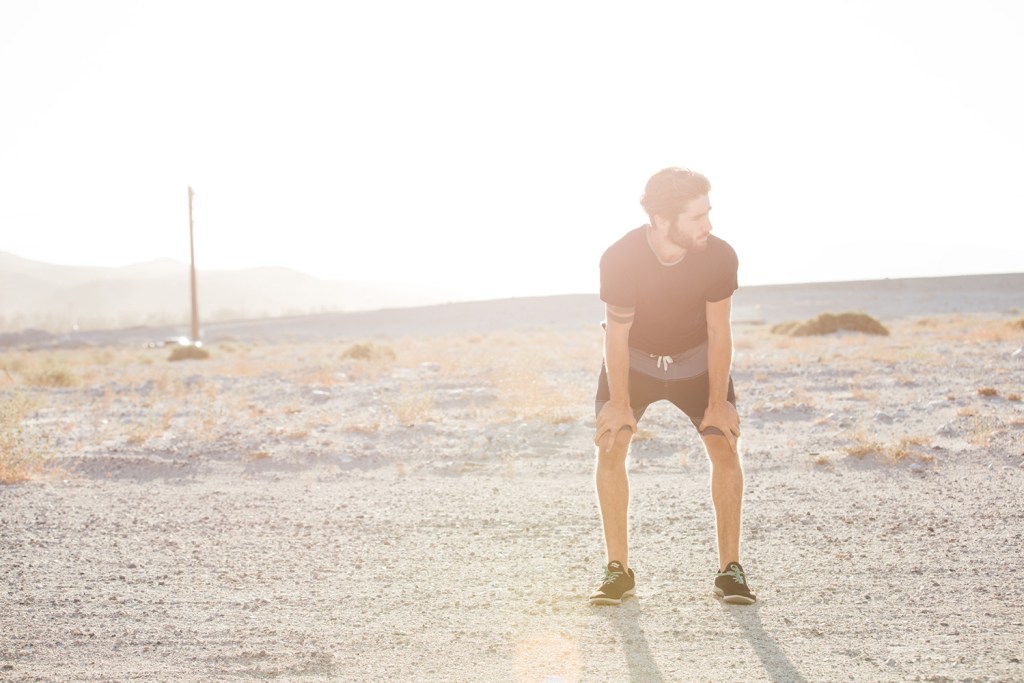Whether you’re planning a race in the thick of summer or just hoping to maintain your mileage through the hot season, there are a few things you should know before the season’s peak temperatures hit. First, the bad news: No matter how good you are at running and hydrating, heat alone can be enough to shut you down. The good news is that your body can adapt to hotter temperatures. And unlike high altitude acclimatization, which can take much longer, the human body can acclimate to heat stress in as little as four days, according to sport scientists at the UK’s Bangor University.
As you acclimate, you start to break a sweat earlier in your workout as your body tries to get a head start on cooling. Your sweat rate increases, your blood vessels dilate, your blood plasma volume increases and your sweat becomes less salty. The end result? You become better able to lower your core temperature during exercise and your perception of heat changes. What once seemed impossibly hot starts to feel simply balmy, said Jessica Mee, a researcher in exercise science at Bangor University.
Consult with your physician beforehand, but slowly introducing your body to heat with just a little exposure every day can jumpstart the process. Mee’s research has shown adaptations in athletes after just five days of daily 20-minute sauna sessions prior to regular exercise. Post-exercise hot water baths may have a similar effect, according to a 2015 study published in the Scandinavian Journal of Medicine and Science in Sports.

The Badwater 135 takes place in July in the sweltering desert heats of southern California. (Photo Credit: Ron Jones / Badwater.com ©AdventureCORPS)
Nickademus Hollon is an endurance coach and athlete who has set course records at notoriously hot races like the Badwater 135, which takes place in late July between Death Valley and Mount Whitney, California. Hollon utilizes sauna sessions to acclimate to the heat, but he recommends starting out slow—just two sets of 10-minute stints in a sauna on your first day, with a full cool-down between sets. The next day, consider doing two sets of 15 minutes, then a single 20-minute set the day after. He suggests moving up from there, adding five to 10 minutes a day over the course of a week until you can stand 45 minutes in the sauna without extreme discomfort.
Mee also says that running with a few extra layers or scheduling workouts for the heat of the day can help you acclimate to heat stress and get a feel for how to perform in sweltering conditions. Regardless of method, Mee recommends athletes start acclimating well in advance of a race. “Just like you wouldn’t put on a new pair of running shoes right before a race, that week prior shouldn’t be the first time you’ve ever acclimated,” Mee said.
She advises starting at least three weeks early. After you’re acclimated, she says you can retain the benefits for up to two weeks. So, she recommends runners spend a week with daily heat training, then hit the sauna or do a layered-up afternoon workout once every few days to keep adaptations current.

Planning a race somewhere hot? Start training in conditions that will mimic that of race day.
It’s important to note that exercising in extreme heat comes with the risk of dehydration and heat-related illnesses, including heat exhaustion and, in more severe cases, heat stroke. Warning signs for heat exhaustion include a fast, weak pulse, cool or clammy skin, headache and nausea, according to the CDC. If you feel weak or faint, the CDC advises you to stop exercising and get to a cool place.
If you’re planning a race somewhere hot, Greg McMillan, the distance coach behind McMillan Running, recommends training in conditions that best mimic that of race day. He concedes that any amount of heat will induce acclimation so if you’re running a race in 100-degree temperatures, training in 85 degrees will likely be just fine. “The perception of heat is a big part of performance,” McMillan said.
During the race, things like ice-filled bandanas, hats dunked in cold water or ice cubes applied to the hands, neck and armpits can be effective ways to cool down, said McMillan. Some athletes wear cooling vests charged with ice water at the start line to get their core temperatures as low as possible before the race. Staying in your car with the air conditioning blasting before walking over to the starting line is similarly effective, McMillan adds.
In addition, hydration is critical—during training, practice reminding yourself to sip water regularly. Most experts suggest drinking about 5 to 10 ounces of water every 15 to 20 minutes while running, especially on longer runs. Digestion can also be touchy in sweltering weather and heat can suppress your appetite, said Hollon, who recommends doing whatever it takes to cool down enough to be able to eat. “If it’s been two hours and you haven’t eaten, take the time to dump your head in a bucket of ice and cool off until you feel your appetite spike,” he said. Hollon also recommends regular doses of pickle juice to prevent cramping.
“Athletes need to respect that they’ll have to slow down [in hot weather], and at the end of the day, it’s about running your best race for the conditions,” said McMillan. “If you do that, you should be happy.”
